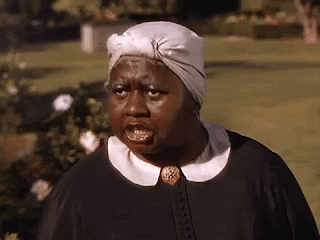So who's original any more? Who makes mega-billions of bucks on someone else's idea(s)?
In the second gif, which I made myself, the characters are in almost the same position as in the Star Wars one (shared from FB).
Takes forever to see these things, then everyone in the coffee room exclaims "Ohhhhhh! That's so NEAT!", a response that used to represent intelligence, and now indicates that 90% of people have jello for brains.
It isn't "neat", folks. It's plagiarism. Gee, let's have four characters set out on a Great Adven- no, no, skip that, a great QUEST. One will have a lot of fur all over. One will be the Token Girl. One will clank when he walks, and one - well, skip that one, it doesn't match up at all. We never see Han Solo dance and stuffing doesn't come out of him and he isn't set on fire.
But does he have a brain? He's still in Star Wars, isn't he?
And look ye! All right, the resemblance isn't exactly monstrous, but there definitely IS a comparison between Judy Garland's tempestuous life of substance abuse and mental illness, and Carrie Fisher's tempestuous, etc. etc. The two have similar brown-eyed/brunette hair and skin colouring. Though it was well-hidden in the movie, you can see here that Garland has a slight outbreak of teenage acne. Facial shape is very different, but look at the eyes! Dorothy here does not look frightened so much as amazed, and already figuring out the next step. This is not a frightened kid. The only time Dorothy is frightened is when she's in the Witch's castle and the Witch has turned over the hourglass and Dorothy sees Aunty Em in the crystal ball. . .and. . . I start bawling, every time. It's one of two - no, actually three or four places in movies where I always cry, even though I know what's going to happen. Another is Mammy and Melanie going upstairs in Gone with the Wind, and then. . . "they got Charlie" in On the Waterfront, and oh. . . I'm going for lunch now.




























.jpg)


